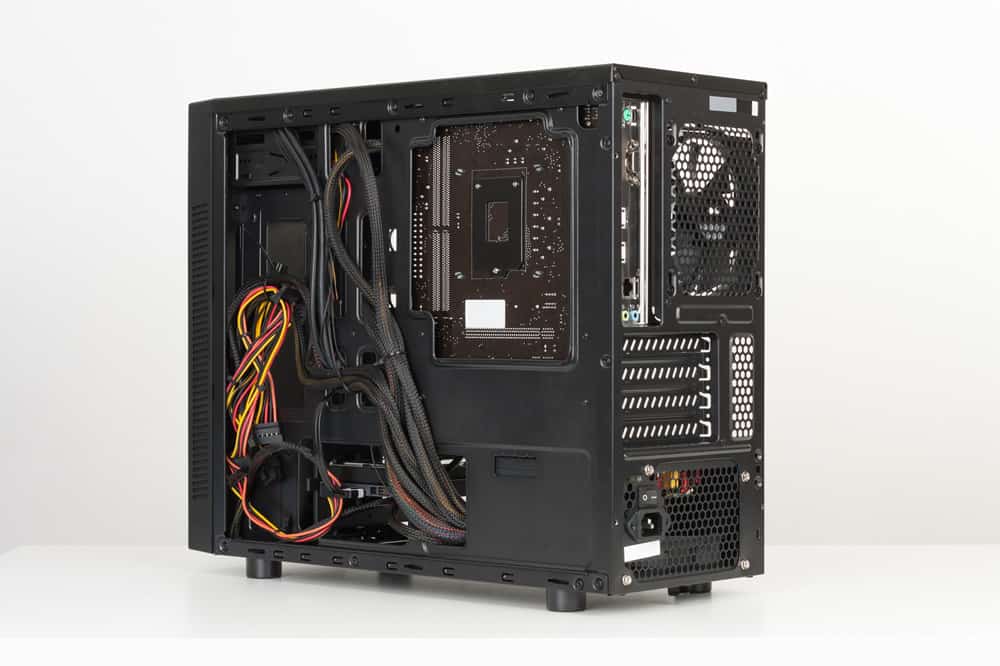Do PC Cases Come With Cables?
This is an especially relevant question for those hoping to build a PC in the near future.
The answer, unfortunately, is uncertain – it seems to be the case that there is no consistent answer to the question.
If you’ve purchased a PC case and are waiting for it to arrive, or if you’re considering purchasing a case in the near future, the best thing you can probably do is to wait and see what your case arrives with. Judging by user reactions, and from inventory lists on product websites themselves, there does not seem to be a reliable way of telling whether or not your case will arrive with cables.
That said, there definitely seems to be a chance that a given case may arrive with cables, though there does not (again) seem to be any sort of guarantee that this will be the case.
Pun very much intended: it’s better to approach and evaluate this question on a case-by-case basis, since there seems to be no consistent reading to go by.
As you’re preparing to purchase your case, do your best to scour the product manifest. If you still can’t determine whether or not your case will come with cables, you’re still better off not purchasing additional cables until the product arrives, and you’ve had a chance to evaluate it.
To be sure, some cases might arrive with cables, and some customers in particular report that most PSUs include cables in their packaging. Again, check beforehand, and when in doubt, hold off on buying them just yet. You can always buy additional cables, but you might not be able to return them.
The Tower (Full Tower)
Also called the full tower, the tower is the main type of PC case that you will find, especially with gamers who want more space for their hardware. They are more than 30 inches in height, and can hold between 6 and 10 drive bays.
The Middle Tower (Mid Tower)
This part of the PC case stands at between 18 and 20 inches in height, and can hold between 2 and 4 drive bays. The middle tower also normally has space for the CD and DVD drives in addition to the drive bays.
If you have been to an office, a library, or in the home of an older person, you will most likely have seen a middle tower design. If you are over the age of 40 and lived in the middle class as a teen, you probably know World of Warcraft well, and played it on a computer that had a middle tower case.
The middle tower design was very popular and it was once the most popular tower option - once upon a time, they were all you would have seen.
The Miniature Tower (Mini Tower)
The miniature tower is somewhat rarer than the above two towers. It normally stands at a height of around 15 inches. At a maximum, it can hold three drive bays, but they typically only hold just 2.
Because they are so small in size and carrying capacity, these types of towers are very rare to come across, and they are very hard to expand, limiting your usage abilities.
Small Form Factor Case
If you can believe it, these are even smaller than the miniature tower. This type of PC case is really small. The main use for it is to limit the spatial impact of your computer as much as possible. There are a few reasons why you may want a PC that takes up very little space.
Small form factor cases are normally about the size of a thicker book like the Bible. This is great for anyone who is looking to save space on their desk. If you are looking for a small, compact PC case for gaming or you are on a smaller budget, then this case may suit you well.
Conclusion
While it is unclear whether your PC case will come with cables until it arrives, you could also contact the supplier that you are purchasing the case from to find out what is included.
If they are unsure, rather be safe than sorry and purchase the cables at the same time so that you can get started as soon as your PC case arrives. If not, you may have to wait for the cables to be delivered before you can use your computer.

